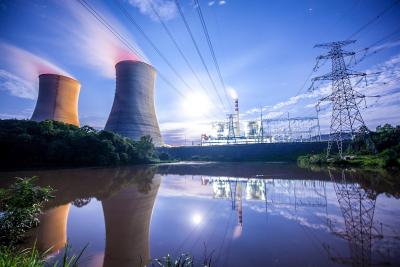Frances Warburton
Publication date
Industry sector
We have decided to reduce a specific payment that some small generators get from suppliers for producing electricity at peak times. This payment cost customers around £370m last year. Our decision document and final impact assessment on these reforms is now available.
Small generators connected to the lower voltage distribution networks are known as embedded generators. Those that have less than 100 MW capacity can receive a specific payment from suppliers for helping them to reduce their charges to use the transmission network. The payment is in addition to the price these generators get for selling their electricity. The cost of this payment is ultimately passed onto customers as part of their bills.
The market arrangements that led to this payment have existed since 2005. Back then the amount of generation embedded in the distribution networks was no more than a few hundred megawatts. That was because Britain was far more reliant on large power stations connected to the transmission network.
A lot has changed since then. We now have around 30GW of embedded generation capacity. To put that in perspective, in total GB has around 97GW of generation capacity connected to the transmission and distribution networks. The level of the payment that we have concerns about has increased since 2005 by 300% to around £47/kW (double the clearing price for the 2016 Capacity Market auction, which guarantees eligible generators a fixed sum for being available). The payment is forecast to increase over the next four years to £70/kW.
We are concerned that at its current level, the payment is now distorting the capacity and wholesale markets and if no action is taken the distortion will increase. It could be holding back investment in new more efficient power stations and innovative, new sources of flexibility which we still need to manage supply and demand.
Some people claim that our reforms threaten to weaken security of supply by putting some of these embedded generators out of business. We don’t agree. Those most impacted by the reforms are generators that can control when they produce electricity, including diesel, small gas, combined heat and power plant, and biomass generators. Together they account for roughly one third of the 30 GW of embedded generation.
However, around two thirds of the 30GW is other renewable generation (solar and wind farms), and will not be affected to the same extent. Generally solar plant do not receive the payment because they cannot generate on dark winter evenings when peak demand occurs. Wind farms also receive less money from this payment compared with plant that can control when they generate. For the generators that are affected, phasing in the reforms over three years from 2018 to 2020 will help smooth the impact and give generators and investors time to adjust their business models.
Making this decision was not easy. We have been analysing the issue since last year. We have spoken to dozens of stakeholders and reviewed around 90 responses to the proposals. The timing of it is important. We needed to make a decision on this now, as waiting longer to make changes would only mean that the distortion and costs to consumers would rise further over the next few years.
We are moving towards a smarter, more flexible energy system. Wholesale and capacity markets that are fair, work well and send the right signals on when and where to invest in new capacity are essential building blocks for this. The reforms will help to make a level playing field for all generators and network users, which we need as we make progress towards the new energy system of the future.
